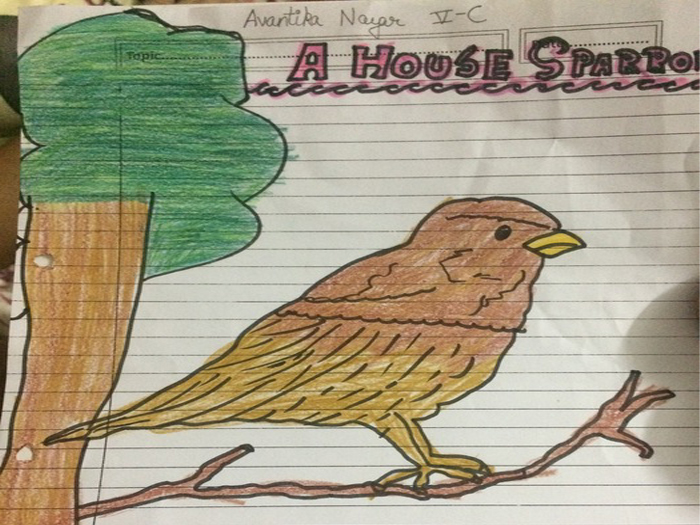Disappearing Sparrows: Where Have They Gone? An interaction with an expert
God loved birds and invented trees. Man loved birds and invented the cage.
Birds are an integral part of nature and they too have the right to live freely just as we do.
On 5th October 2016 at the Nehru Planetarium, The Indian School came face to face with Dr. Naveen Kumar Tiwari from the Department of Environmental Studies - University of Delhi, to discuss and share views on a serious concern, namely, the extinction of sparrows, lovingly known as Gauraiya in India. This house sparrow is also the official state bird of Delhi.
Dr. Tiwari informed us that the first week of October is observed as Wildlife Week while the 20th of March is observed as World Sparrow Day.
Some of the possible reasons for the endangerment of sparrows were discussed during the seminar.
Scarcity of food
Due to the intensive use of insecticides and pesticides, tiny insects have disappeared which were a major part of the sparrows diet.
Lack of nesting and breeding spaces for sparrows
Due to the enormous growth in human population, our ways of living have changed. People have started living in flats and societies, which has led to the shortage of open spaces for sparrows to build their nests and breed.
Harmful radiation
In today's day and age, with the need to stay connected all the time, we have come up with cell phone towers which are spreading electromagnetic radiations that have chased away the rare bird.
[gallery link="file" columns="2"]
Increasing competition for nesting sites.
The growing population of pigeons is a grave concern for the extinction of sparrows. A survey tells us that sparrows face tough competition from pigeons and crows, especially urban species like rock pigeons.
Along with the causes for the disappearance of this pretty creature we also discussed a few corrective measures that we can take at our end to get them back.
People can hand-make boxes for sparrows with a small hole. This way a bigger bird cannot enter, leaving the scope for sparrows to have a safe nest.
Areas should be identified for their breeding where there are no radiation emitting mobile towers and also large farmlands with less or no use of pesticides.
Arrangement should be made for the availability of grains and water for sparrows.
In this way, we may be able to bring back the lovely chirpiness associated with sparrows.
The interaction with Dr. Tiwari was quite enlightening. Our children Mannat Suri, Maanya Arora, Avantika Nayar, Ashvin Awasthi, Yahvi Rishi, Hrdya Jain, Uday Soni, Adamya Saxena, Kabir Mongia, Riddhi Anand of class V and their teacher, Ms. Mahima Kapoor who accompanied them to the seminar, enjoyed it tremendously.
Yahvi Rishi and Riddhi Anand (V-D) and compiled by Ms. Mahima Kapoor.













